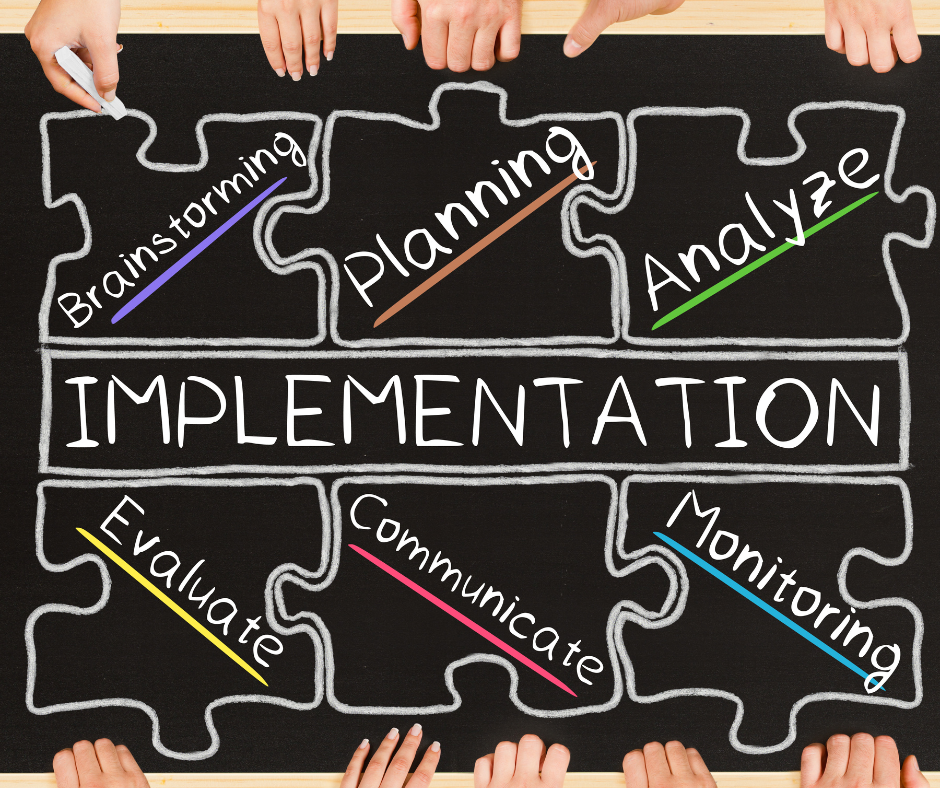

In today’s fast-paced business world, having well-crafted company policies is not just a formality, but an essential factor for organizational success. Company policies serve as a foundation for shaping organizational culture, decision-making processes, and everyday operations. But how can one create effective company policies that truly make a difference? This comprehensive guide on how to write a company policy will take you through the process of writing, implementing, and communicating company policies that drive positive change and create a thriving work environment.
Company policies are the backbone of any successful organization, as they set the tone for how employees should behave and the decisions they make. These policies are often crafted in accordance with legal or regulatory guidelines and are designed to support the company’s overall mission and values. It is essential for organizations to establish their own policies that align with these regulatory guidelines.
Without a well-defined set of policies, the entire organization may struggle to maintain consistency and compliance, leaving employees feeling lost and disengaged. For instance, the World Health Organization is known for its clear policies that contribute to its overall success.
A company policy definition, also known as a policy statement, is a document that outlines instructions dictating how activities are conducted within an organization, often in line with legal or regulatory guidelines. It serves as a guide to inform decisions made and reflects the organization’s values. The mission and objectives of the organization should be considered while crafting a policy, as they heavily influence its content.
Bear in mind that company policies diverge from policies and procedures. Procedures delve into the specific steps required to complete a task, while policies provide general guidance on expected behavior. Understanding this distinction is key to writing effective policies that can be easily implemented and followed by employees.

The primary motivations for establishing company policies are to promote uniformity, ensure compliance with regulations, and enhance employee satisfaction. Company policies serve as a compass, guiding employees in their day-to-day tasks and decision-making processes, ultimately shaping the organization’s culture and work ethic.
Well-defined company policies bring numerous benefits. They provide a consistent approach to operations, promote employee responsibility, serve as a reference for new staff members, and empower employees with a sense of authority. Moreover, clear formatting and style in company policies enhance readability and employee engagement, ensuring that they adhere to regulatory guidelines and are easily understood by all employees.
Creating an effective company policy involves a methodical process that, when followed diligently, results in a comprehensive document that addresses the organization’s needs and expectations. This process includes gathering input and research, developing a clear structure and format, and writing the policy content.
Each step in the policy creation process is crucial to ensuring that the final product is accurate, relevant, and easily understood by employees. Organizations, through these steps, can craft policies that comply with legal and regulatory guidelines and foster a positive, efficient work environment.
Prior to the actual writing process, gathering input from stakeholders and conducting thorough research is vital. This includes consulting with employees, experts in the field, and understanding any applicable laws that may influence the policy. Creating a priority list of policies to be addressed allows for a systematic approach and ensures that the most pressing issues are tackled first.
Involving employees in the policy development process not only provides valuable insights, but also fosters a sense of ownership and commitment to the policies, ultimately leading to higher levels of engagement and compliance. Organizations can ensure relevance, comprehensiveness, and alignment with industry best practices in their policies by gathering input, conducting research, and taking the time to interview employees.

For employees to easily access and comprehend the policy, a well-organized and reader-friendly structure is essential. This involves using headings, sections, and formatting tips to create a visually appealing and comprehensible document. Consistency in formatting throughout a company policy, along with the use of white space for improved readability, can significantly enhance the user experience.
Crafting a company policy requires the use of precise words, short sentences, and an active voice for clear message conveyance. Additionally, professional fonts and standardized formats should be employed to maintain a cohesive and consistent look across all writing policies and company policies.
Once a solid policy structure and format are in place, the next step is to write policies with clarity, conciseness, and actionability as key factors. It is essential to ensure that the content is easy to understand and can be adhered to by employees.
Reviewing the policy work helps identify any errors and fine-tune the content, making it accessible to non-specialists. By focusing on the reader and maintaining a clear, concise writing style, organizations can create policies that effectively communicate their expectations and requirements.
An effective company policy consists of several critical components that work together to form a comprehensive and actionable document. These elements include the purpose statement, specifications and guidelines, and implementation and compliance. Each element serves a specific function in providing direction and clarity on the company’s requirements and processes.
Understanding and incorporating these key elements into the policy ensures that employees have a clear understanding of the expectations and procedures they need to follow. This, in turn, helps create a consistent and compliant work environment that supports the organization’s overall goals and values.
The purpose statement is a crucial element of any company policy, as it outlines the goals and objectives of the policy. A well-crafted purpose statement not only delineates the policy’s intention, but also aids in decision-making and ensures that the policy aligns with the company’s overall mission and values.
An effective purpose statement should:

Including specific rules and guidelines within a company policy is essential to ensure clarity and compliance. By providing detailed guidance on expected behavior and the proper procedures to follow, employees can easily understand and adhere to the policy.
It is important to ensure that the specifications and guidelines within the policy are in accordance with relevant laws and legal or regulatory guidelines. This not only guarantees that the policy is compliant with the law, but also protects the organization and its employees from any unfair or unlawful practices.
Addressing the implementation process, monitoring compliance, and holding employees accountable for following the policy are crucial aspects of an effective company policy. Ensuring that employees understand and adhere to the policy is vital for maintaining consistency and compliance across the organization.
Strategies for monitoring compliance and enforcing policies include providing training and awareness, issuing warnings, and taking disciplinary action when necessary. By implementing these measures, organizations can ensure that their policies are effectively followed, ultimately leading to a successful and compliant work environment.
To maintain relevance and effectiveness, company policies should be reviewed and updated regularly. As laws, regulations, and organizational needs change, it is crucial to ensure that policies remain up-to-date and accurately reflect the current requirements and expectations.
Periodic review and revision of policies enable organizations to identify gaps or weaknesses, reduce risks, and foster a culture of responsibility and accountability. This continuous improvement process not only ensures compliance but also demonstrates the organization’s commitment to ethics and values.
Feedback from stakeholders and executive approval should be sought before finalizing a company policy. This process helps to ensure accuracy, clarity, and a logical structure that can be easily understood by all employees. Furthermore, involving stakeholders in the review process can foster a sense of ownership and commitment to the policy, ultimately leading to higher levels of engagement and compliance.
The feedback and approval process may involve presenting the policy draft to the relevant manager or supervisor, as well as engaging the policy team, peer group, and subject matter experts for their insights and suggestions. By incorporating their input, organizations can create a well-rounded policy that addresses all pertinent concerns and meets the needs of the organization.

To maintain policy effectiveness, updates accommodating changes in laws, regulations, and organizational needs are vital. Failure to keep policies current may lead to legal or financial repercussions, as well as confusion and inconsistency among employees.
To ensure that policies remain up-to-date, organizations should periodically review and adjust them as necessary, taking into account any changes in the legal and regulatory landscape, as well as evolving organizational requirements. By staying vigilant and proactive in updating policies, organizations can safeguard their reputation, maintain compliance, and foster a stable and successful work environment.
Several tools and resources are available to assist in the policy writing process. These include policy templates, software, and professional services that can streamline and simplify the policy creation process.
One such resource is the SHRM template, which provides the necessary formats, design, layout, key components, and other relevant details to create a policy. Utilizing these tools and resources such as PTO policy SHRM can save time and ensure that the final policy is accurate, comprehensive, and in line with industry best practices.
Once a company policy is in place, its effective implementation and communication to employees are essential. This involves not only providing training and awareness on the policy, but also maintaining open lines of communication for employees to ask questions, seek clarification, and provide feedback.
Consistent communication and engagement with employees can encourage a culture of openness and transparency, leading to higher levels of understanding and adherence to the policy. By fostering a supportive environment that values employee input, organizations can successfully implement and communicate their policies, driving positive change and lasting success.
For successful policy adoption, training employees on new policies and maintaining their awareness through regular communication is crucial. By providing comprehensive training on the policy’s requirements and expectations, employees can better understand their responsibilities and the consequences of non-compliance.
Furthermore, regular communication on policy updates, changes, and reminders helps maintain a consistent level of awareness and reinforces the importance of adhering to company policies. This, in turn, promotes a culture of accountability and ensures that employees follow established guidelines, making it easier to hold employees accountable.

Maintaining a compliant and consistent work environment necessitates monitoring compliance with company policies and enforcing them when necessary. Strategies for monitoring compliance include:
Enforcing policies when violations occur is equally important. This may involve providing additional training, issuing warnings, or taking disciplinary action as needed. By actively monitoring compliance and enforcing policies, organizations can ensure that their policies are effectively followed and that potential risks are mitigated.
In conclusion, well-crafted company policies are a crucial component of a successful organization. By understanding the purpose and benefits of policies, following a systematic process for writing and updating them, and effectively implementing and communicating them to employees, organizations can create a thriving work environment that aligns with their mission and values. With dedication, commitment, and the right tools and resources, any organization can develop policies that drive positive change and lasting success.
To structure a company policy, establish goals and HR strategy that align with the mission and values. Include topics such as health and safety, equal opportunity, code of conduct, etc.
Create the policy using plain language, include relevant details and who does what, and publish and distribute it.
A company policy should be written in plain language, include clear rules and regulations that are relevant and enforceable, and focus on who does what in a precise and concise manner.
Visuals should be included when necessary to ensure easy understanding, and jargon should be avoided.
A company policy typically includes guidelines for employee conduct, job descriptions, personnel policies, and company governance. These cover topics such as dress code, safety procedures, state wages, salary/bonuses, vacations/sick leave/maternity leave, insurance/benefits, and more.
It should provide clear guidance on health and safety, equal opportunity, code of conduct, and disciplinary action.
Company policies should be reviewed and updated periodically to ensure compliance with laws and regulations, and to keep up with organizational needs.
Organizations can ensure compliance by providing training and awareness, monitoring through audits and reporting systems, and enforcing policies when necessary.